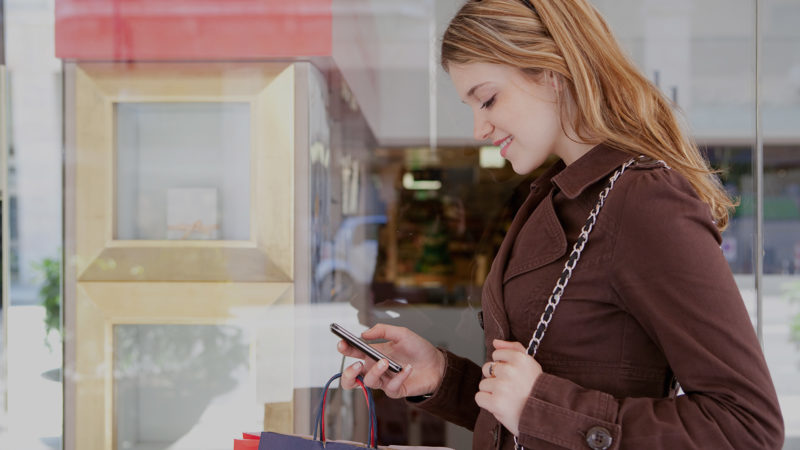Personalization: Your Surefire Strategy To Increase Customer Engagement
Columnist Josh Todd explains why carefully targeting push notifications and gathering the right data are critical to engaging customers in the long term.

But in truth, there is a lot of intelligence behind that simple notification. Each piece of it can be, and should be, carefully tailored to you as an individual based on all the information the sender knows about you.
The challenge for app publishers and brands is that you can’t tailor every message for each user by hand. Personalization at scale is paramount.
Why? Because 25 percent of apps are only ever used once, and mobile users want personalized marketing and app content that maps to their preferences, needs and locations. The key is creating a message that appears as though it is customized for each user.
The Power Of Push
Push notifications play a critical part in a personalized engagement strategy — our recent data shows that 65 percent of push-enabled users return to an app within 30 days of downloading it, while the 30-day retention rate for users who have not enabled push messages drops to 19 percent.
In other words, app publishers are able to engage (and retain) almost three times more push-enabled users than users who don’t opt in to receiving push. However, push notifications are a sensitive topic — annoying messages are the number one reason consumers uninstall an app. That doesn’t have to be the case for your app.
Mobile Is Personal
All of this data tells us something we already know: Mobile is personal. If you’re going to win, you need to be building personal relationships with each and every user. Even a seemingly simple engagement can be surprisingly complex.
Take a look at the graphic below. I pulled this example from a major sports retailer for a keynote I gave at the recent ENGAGE conference hosted by Localytics.
Each piece of this notification — the customer profile, the user behavior, the custom HTML and the automated scheduling — is part of the puzzle that has to be put together in order to create this personalized message.
It all starts with the data about Katie, including her name, her cross-channel interactions with the brand and her likes and desires. And that’s where marketers should start.
Start With The Data
With so much data at your fingertips, the challenge then becomes understanding what your customer wants so you can customize and deliver the message effectively.
The way to accomplish that is simple — just listen to what your customers are already saying. They share what you need to know in many ways and in many forms, some explicit and some implicit.
Here are the best tactics to use when gathering information to use in push-message personalization:
- Just ask them: If you are a sports app, ask your users to check their favorite leagues and teams. Ask them if they are interested in hearing the latest news on their favorite teams. Maybe even ask them how fanatical a fan they are so that you can give the ones with the most interest the deepest content while keeping it high-level for the lighter fans.
- Listen to the signal: If you are a content app, track and segment users based on their preferred delivery method. You’ll notice that some users consume more video, while others like to read the article. With that basic information, you can begin understand what it takes to bring engagement to the next level and shape the experience by leading with what they want.
- Use all of the info you have on them: Be sure to bring all of the customer knowledge you have on your users (even information outside of the app) into a central repository so you can coordinate that intelligence and use it to drive experiences.
Obstacles To Avoid
While gathering all of this information helps you create a customized and carefully targeted push message, it’s pretty easy to take a misstep.
First, be sensitive to the personal information your users share. It’s okay to use their basic information, but avoid getting overly personal, as customers are increasingly sensitive to how their personal information is used.
Second, look for the outlier. For example, I’m a big wine guy, so I’m in a wine-of-the-month club. That being said, I also have nieces and occasionally make a purchase that is out of the realm of my usual choices (for example, a “My Little Pony” doll).
For a brand looking to sell to me and engage me through push messages, they may think I like to purchase children’s toys, while this is really just an outlier from my usual buying habits.
Nevertheless, if you avoid these areas and personalize based on what you know about your users, you’ll reap the benefits for one main reason: Your users want it. They demand a better experience, and they acknowledge that you know a lot about them and expect you to use that info to deliver a better experience.
As mobile — and specifically push — start to play more of a role in the lives of your customers, reaching them how and when they want you to will be the key to engaging them for the long term.
In the end, if you get data-driven engagement right, your messages will not be annoying, or even seen as marketing. They will be welcomed by your users because you have tapped into the most important part of any marketing effort — you made it about them.
Opinions expressed in this article are those of the guest author and not necessarily MarTech. Staff authors are listed here.
Related stories

